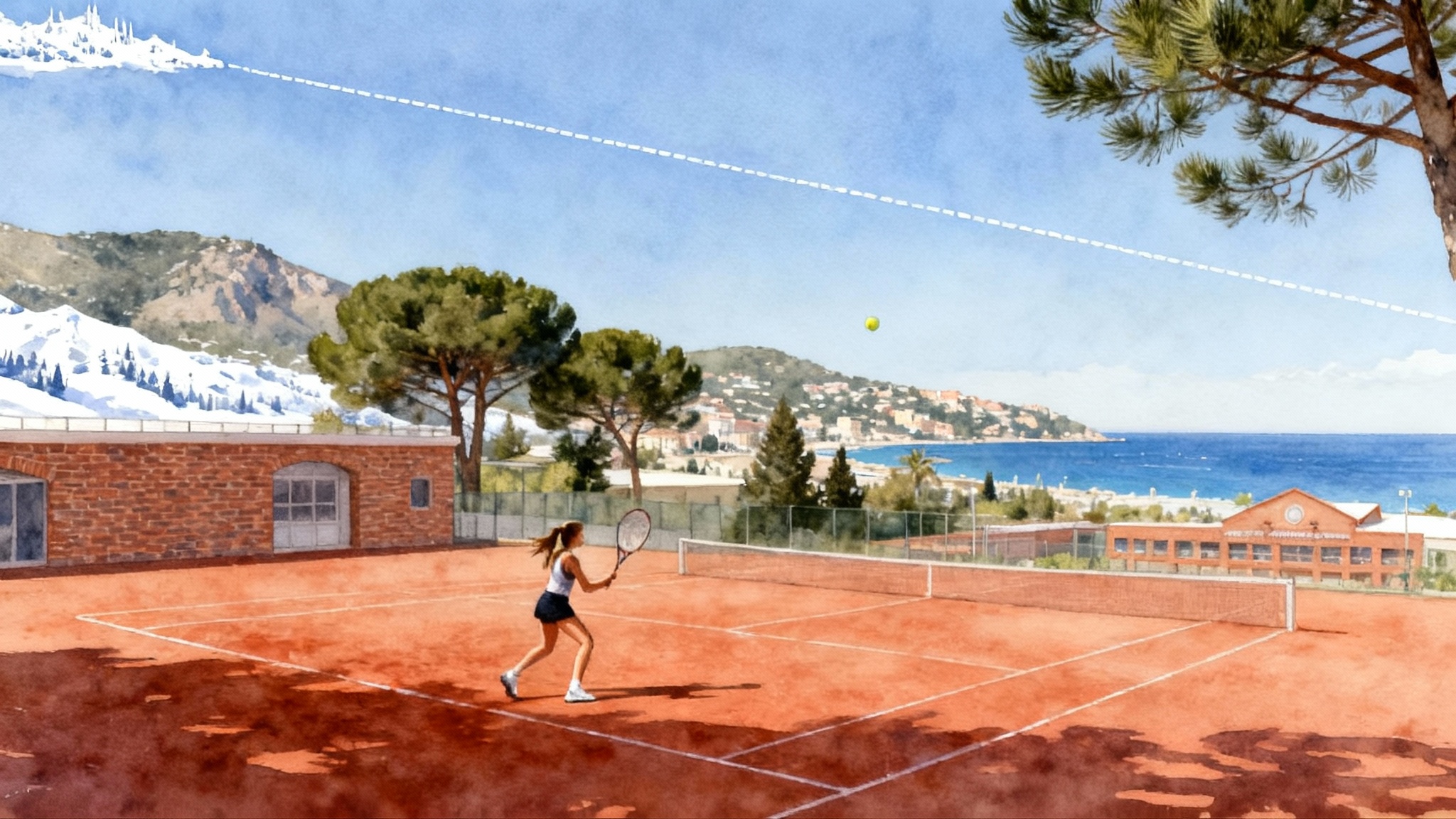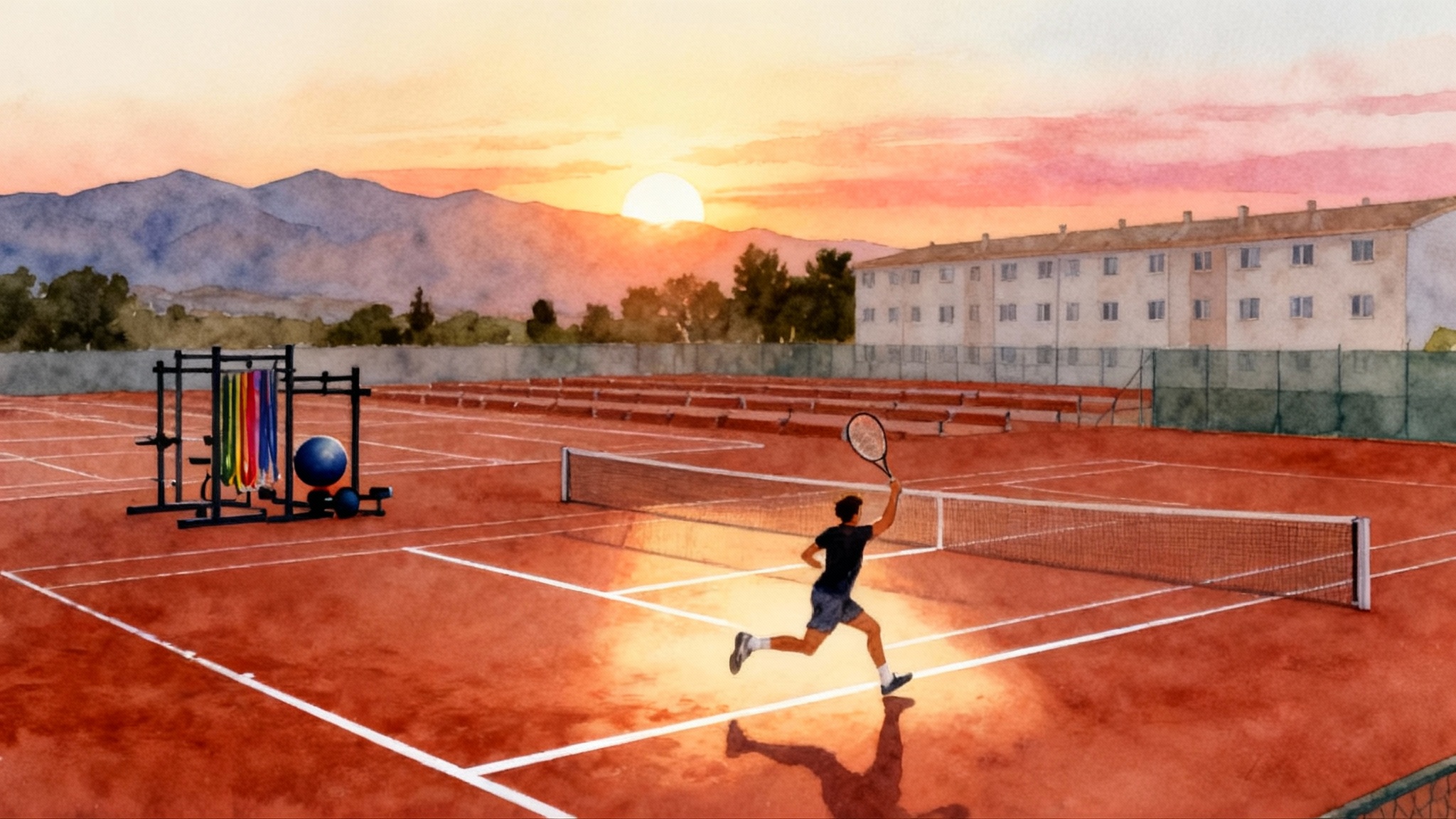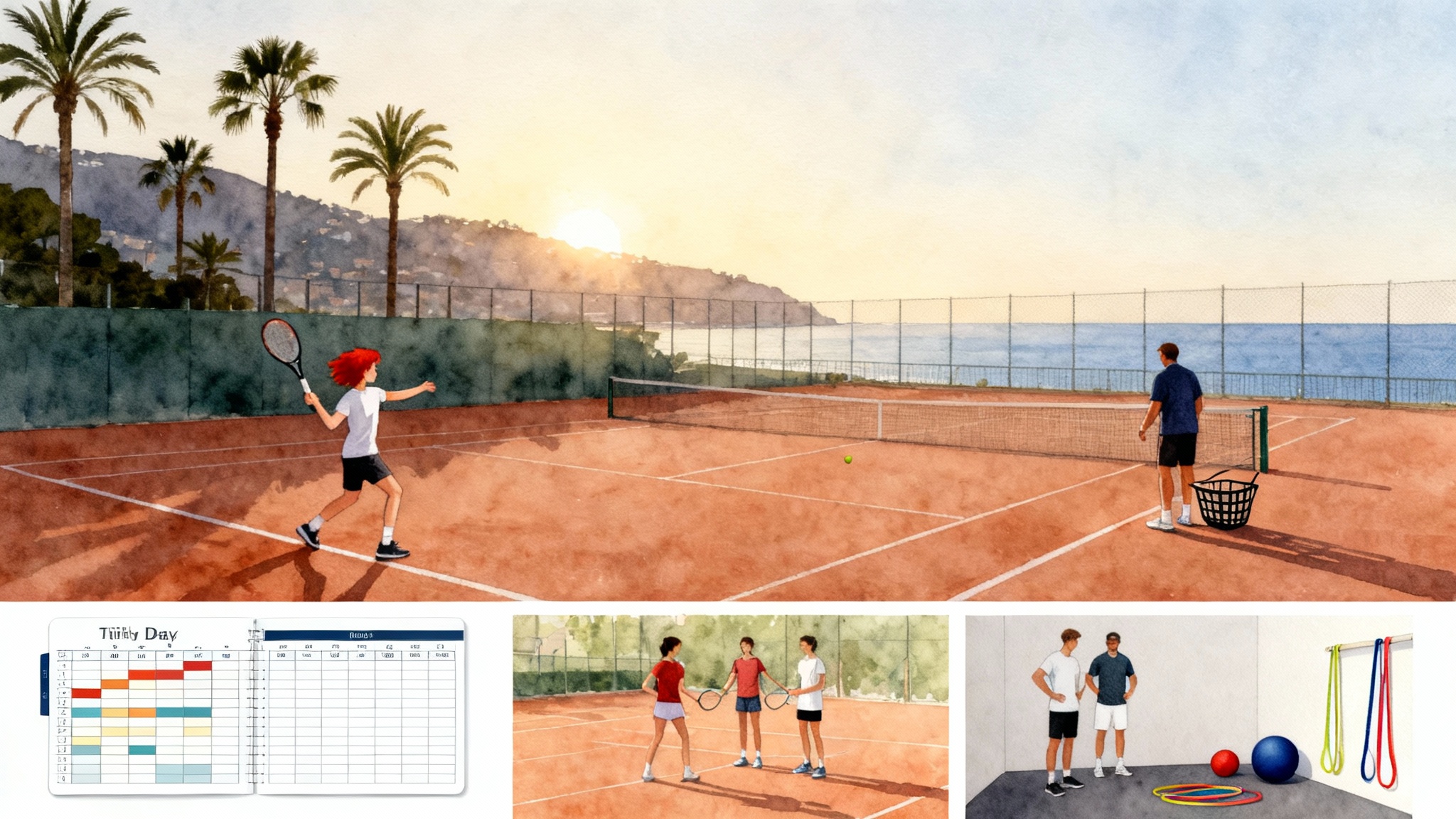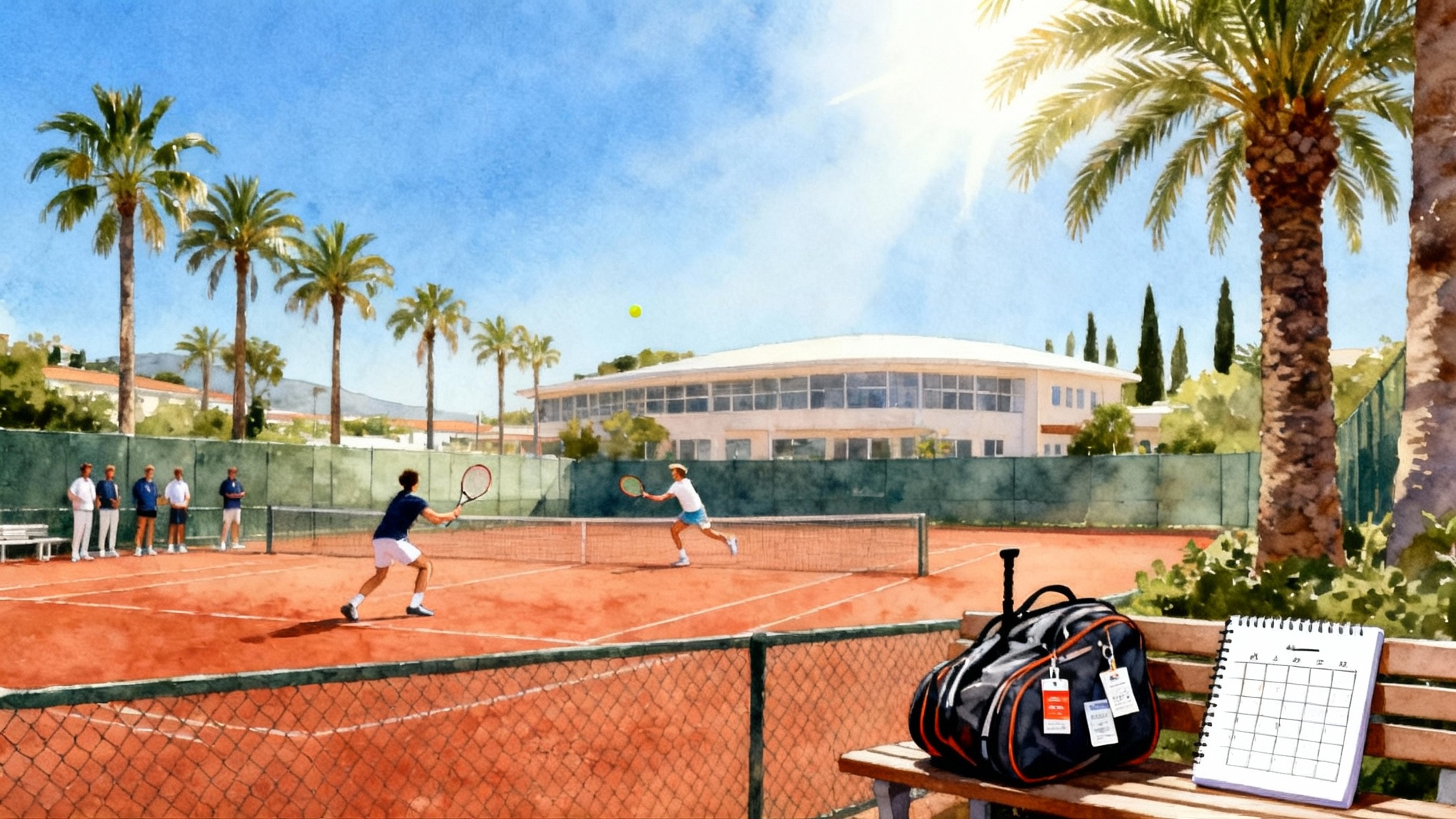Alex de Minaur's Spanish Club Roots and Rise to the ATP Top 10
From Club Atlético Montemar and 40-15 in Alicante to the ATP top 10, Alex de Minaur built a game on clay-first habits, dense club competition, and a long bond with coach Adolfo Gutiérrez, then scaled up with Tennis Australia’s support.
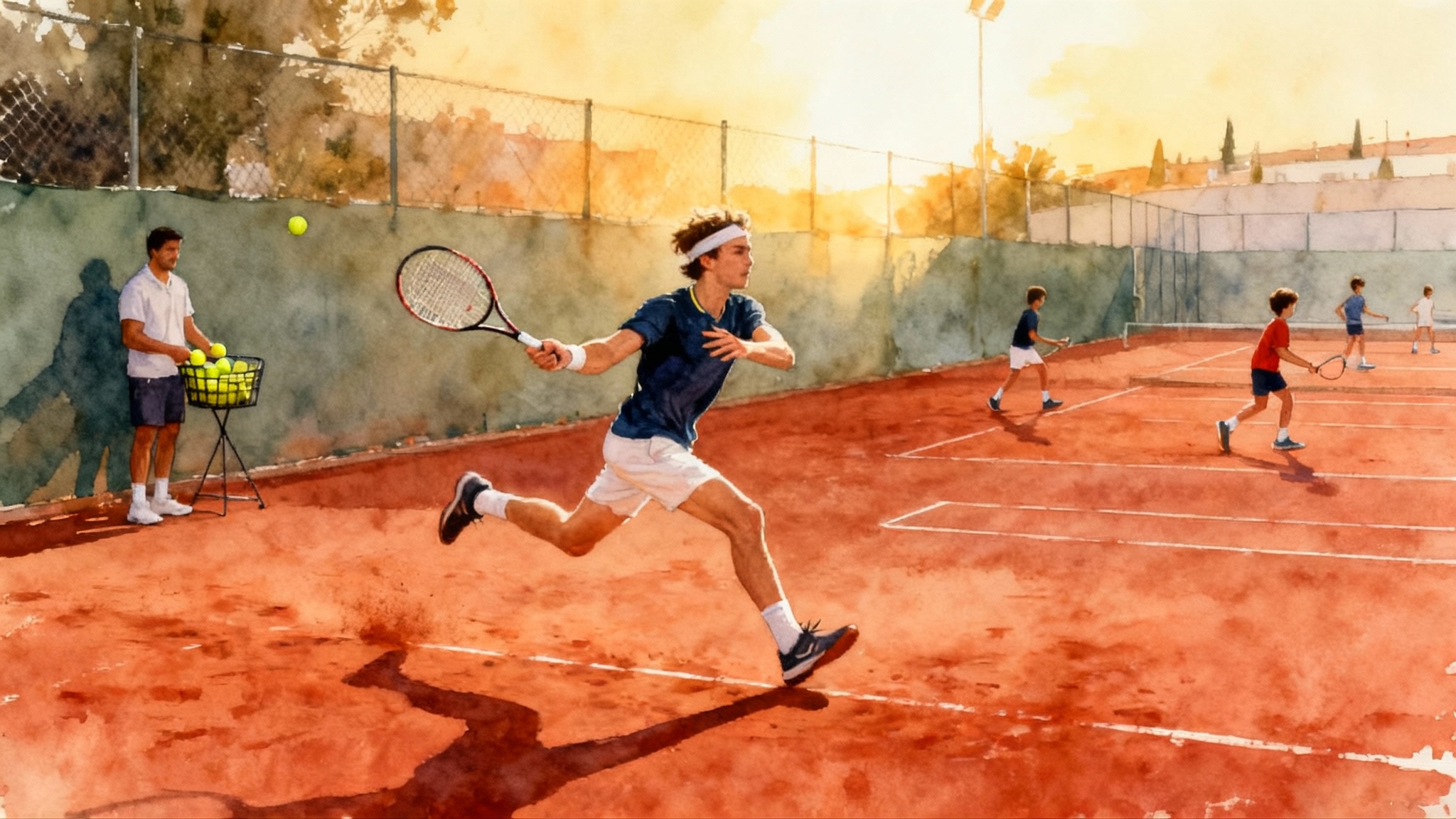
The Spanish club cradle behind an Australian top tenner
Walk past the café at Club Atlético Montemar in Alicante on a summer morning and you hear the soundtrack of Spanish tennis: balls thudding into heavy clay, coaches counting in Spanish, kids jogging to pick up balls before the next basket. This was Alex de Minaur’s earliest tennis classroom. With coach Adolfo Gutiérrez guiding him from childhood, he learned to build points, suffer through long rallies, and love the daily routine. Years later, he cracked the ATP top 10, turning that quiet club education into a world-class game, as his official ATP profile confirms.
De Minaur’s route was not a glossy boarding-academy path. He stayed rooted in a local club ecosystem, first at Montemar and later at 40-15 in Alicante, while maintaining a single primary coach. As his results rose, he paired that Spanish base with the structure and resources of Tennis Australia. The combination produced a player whose speed and clarity of purpose make sense the moment you trace where and how he trained.
This is the blueprint we will explore: why a club can be enough, how clay mileage translates into modern hard-court success, what coach continuity really buys you, and how a federation partnership can scale a family-built development plan without blowing up the player’s identity.
Three pivotal decisions that shaped his game
1) Staying club-based instead of a boarding academy
Boarding academies promise professional sparring and a ready-made schedule. De Minaur did the opposite. He grew up in a club that felt like a neighborhood, not a factory. That choice had implications:
- Reps over razzle: At a club, hours come cheap in the best way. There is no need to perform every session. Players can log deliberate, sometimes boring work that builds stability.
- Competition density without airfare: Spanish club leagues and regional events offer frequent, gritty matches against many styles, especially on clay. It is like learning to speak a language by talking with locals every day.
- Adults on court: Clubs mix ages. Juniors often hit with older, steadier club players. That variety forces respect for patterns, not just pace.
The downside is obvious: fewer bells and whistles. The upside is deeper roots. By the time de Minaur faced the noise of stadium tennis, his daily training had already taught him to find rhythm anywhere.
2) Keeping one primary coach for continuity
Adolfo Gutiérrez became the constant thread. Families sometimes rotate coaches to chase quick improvements. De Minaur’s team did the reverse. One voice meant one vocabulary for technique, footwork, and problem solving. Over years, that continuity compounds:
- A shared timeline: The coach knows which technical cues worked at age nine and which failed at 14. This trims guesswork during high-stress stretches.
- Trust under pressure: When matches tighten, the player hears a familiar instruction and does not waste energy translating it.
- Cohesive planning: Fitness, tournament selection, and game-style emphasis stay aligned because the same person signs off.
Continuity does not mean isolation. As de Minaur’s career progressed, Australians like Peter Luczak and mentor Lleyton Hewitt shared perspective. But the anchor point stayed the same. The result is a player whose identity on court is stable across surfaces and seasons.
3) Splitting development between Spain and Australia
As the stakes rose, de Minaur paired his Spanish base with federation support. That added structure without erasing his origins. The Tennis Australia biography outlines how he moved between the two countries while climbing the rankings. For families, the lesson is not to pick one system forever. It is to decide which environment does which job:
- Spain for habits: clay tolerance, pattern literacy, daily volume.
- Australia for scaling: planning, sports science, travel logistics, and competitive opportunities at home and across Asia-Pacific.
The trick is sequencing. Use Spain to form the player. Use Australia to project the player into bigger arenas.
Training blocks that built speed and point construction
De Minaur’s court coverage jumps off the screen. It is not just foot speed. It is how quickly he gets back to neutral and how fast he turns defense into a counterpunch. Below is a training architecture that mirrors what a clay-first, club-centric pathway produces. You can adapt this to a junior calendar.
Weekly microcycle template
-
Monday: Movement and neutral patterns
Warm-up: 10 minutes of multi-planar skips, carioca, and low hops. Add 2 sets of 5 deceleration stops from a sprint, learning to sink hips and keep chest tall.
On-court block 1: Spanish cross drill. Backhand crosscourt 12-ball live rally, coach feeds neutral, player sustains height and shape. On ball 13, change line once and recover. 6 sets per side.
On-court block 2: Corner escape. Start wide on the run, defend to the middle third, recover to baseline center within 3 steps, then reestablish offense with a heavy cross. 8 reps each wing.
Strength: Split-squat isometrics, 4 sets of 30 seconds per leg, then shuffles with a light band, 3 sets of 20 meters. -
Tuesday: Serve plus one and return neutralization
Serve patterns: Wide deuce serve, plus one to backhand corner, then depth to center. 5 sets of 8 balls. Track first-strike error rate.
Return drills: Two deep blocks per wing with a target cone 1.5 meters inside the baseline. Emphasize height and big margins. 6 sets.
Conditioning: 6 by 15-second 'W' court shuttles, 45 seconds rest. -
Wednesday: Clay-specific tolerance day
Live sets to 11 points, second ball starts, both players required to hit 3 neutral shots before going for angles. Count how many points reach 8-plus balls. Repeat for 4 rounds.
Finish with 10 minutes of high ball forehands, learning to hit up and through, not bail out. -
Thursday: Acceleration and change of direction
Ladder and cone work that ends with a live ball. Player explodes to a feed, hits on the rise, then performs a quick crossover to reset. 12 minutes continuous, 3 rounds.
Reactive defense: Coach yells a color that tags a cone; player must touch that cone after the hit, then hunt the next ball early. -
Friday: Pattern day, match play
Scripted games: Start deuce points with a deep backhand cross, then forehand inside out on ball 4. Play to 7. Reset with mirrored pattern on ad side.
Match play 1 set, constraint that both players must use depth before changing direction. -
Saturday: Strength and mobility, light hit
Eccentric hamstrings, ankle stiffness work, hip mobility. Short court touch and volleys. -
Sunday: Off or light movement.
Why these elements matter
- Deceleration tolerance: Clay rewards players who can brake without losing posture. That keeps the next step fast.
- Height and shape as a weapon: Deep, high balls shrink the opponent’s strike zone. On hard courts this buys time and invites short replies.
- Planned changes of direction: The Spanish cross drill teaches when to go line and when to reload cross. Pattern literacy prevents panic.
- Margins under pressure: Returns and neutral balls that clear the net by a meter reduce free points for the opponent, especially in wind or on slower courts.
How a federation partnership scaled the club foundation
Federations can add the infrastructure that a family and club cannot easily provide: travel logistics, physio networks, wild cards, and exposure to international fields. Tennis Australia’s ongoing support sat on top of de Minaur’s Spanish habits rather than replacing them. Here is a practical playbook for families considering a similar blend.
-
Start with a clear division of labor
Club and primary coach: Own technical development, daily planning, and tournament selection in Spain and Europe.
Federation: Provide block-based support. Think travel grants for a 4 to 6 week swing, performance testing, and access to domestic events when home. -
Protect the player’s vocabulary
Ask the federation’s fitness or technical staff to use the same cues as the primary coach. Share a one-page 'player language' glossary before camps. -
Build seasonal blocks rather than single trips
Example year for a 14 to 16 year old: Spring Spain block of 5 weeks on clay; early summer Australia block of 3 weeks for domestic events and fitness testing; late summer Europe block for 4 events; autumn rest and local league. -
Use federation access for targeted opportunities
Priority should be match types that are scarce at the club: indoor hard, altitude events, or back-to-back tournament weeks to practice recovery. -
Keep data flowing both ways
Send simple match dashboards to both the primary coach and federation staff: first serve percentage, rally length distribution, and break points saved. Keep the same metrics all year so trends are obvious.
Why clay mileage still wins on hard courts
People mislabel de Minaur as fast first, tactical second. In truth, his speed is the product of tactical repetition. The clay years in Alicante were an accelerator for the modern hard-court game.
- Clay insists on patterns: You learn to build to a short ball, not hunt a winner early. That patience transfers to medium-fast hard courts.
- Clay forces footwork economy: Slower surfaces punish sloppy recovery. Players learn to save steps and arrive balanced. That keeps the backhand down the line safe under stress.
- Clay toughens the body: Longer rallies build tendon and fascial resilience. That resilience makes repeated accelerations in best-of-five less risky.
For juniors, mileage on red creates a bank account of habits. When you switch to hard, you do not get slower. You get smarter about where to spend your speed.
Structuring a bilingual, cross-country junior schedule without losing stability
Families hear bilingual and think chaos. It can be the opposite if you adopt a few rules.
-
One homeroom, two campuses
Treat the Spanish club as homeroom. Australia is the second campus. Keep the same daily template in both places: wake time, mobility, hit, school, recovery, second hit, review. -
One primary voice
The primary coach sets the plan. Visiting or federation coaches add layers but do not change the core cues. -
A fixed remote routine
Weekly video check-in between the player, primary coach, and any support staff. Keep it at the same hour each week. Use the same review template: three clips that show progress, three clips that show a problem, one action for the next seven days. -
Language mirrors
Translate key cues into both languages and tape them inside the bag. Example: 'Height first' and 'Altura primero'. The cue should survive the flight. -
Friends and school continuity
Keep one school advisor who understands the calendar. Build two social anchors that do not move: a recurring club team practice and one hobby group at home.
A parent’s checklist you can act on this month
- If your player is 10 to 14, schedule two tournament blocks on clay within six months, even if hard courts are your end goal.
- Identify one coach who will own the player’s vocabulary. Audit every new specialist against that vocabulary before you add them.
- Create a two-page development brief: preferred patterns, technical priorities, injury history, and a 12-month tournament plan. Share it with any federation or academy.
- Use a simple rally-length stat after every match. Record how many points reached 5, 8, and 12 balls. Decide which number you want to grow.
- Build a weekly microcycle and protect the easy days. If every day is a test, nothing is a test.
Common pitfalls and how to avoid them
- Chasing points over patterns: A ranking without patterns collapses under pressure. Protect training weeks.
- Too many coaches at once: Expertise helps, competing vocabularies hurt. Consolidate voices, then add specialists in short windows.
- Ignoring deceleration training: Sprint work is not enough. Repeated high-quality stops preserve knees and let the player recover to the middle faster.
- Cutting clay hours after a growth spurt: Older, taller juniors need a second wave of clay miles to rebuild balance and timing.
What this means for academies and clubs
Clubs have a powerful story to tell. You do not need to mimic a global academy to produce a top player. What you need is a repeatable training language, dense local competition, and a calendar that steadily increases the load while preserving identity. Federations can plug in resources when the player is ready, not before. For further context on clay-first pathways in Spain, compare with Alcaraz’s JC Ferrero path, and for a different model of coach continuity, see Sinner’s Piatti path.
The throughline
Alex de Minaur did not magically become the quickest player on tour. He learned to move inside a system that rewards patience, pattern clarity, and daily work. A Spanish club gave him his habits. One coach gave him a reliable language. A federation gave him scale. Put those pieces together and you get a player who can survive long rallies, turn defense into offense, and keep solving problems at the speed of elite tennis.
Families can borrow this blueprint. Start where you are, at a club that feels like home. Collect clay mileage. Choose one voice to guide the long arc. Then partner with your federation to add travel and science when the foundation is ready. That is how a quiet court in Alicante becomes a launch pad for the world stage, and how a junior with good feet becomes a professional who knows where, why, and how to run.
